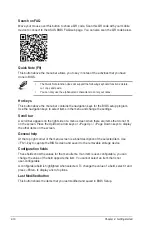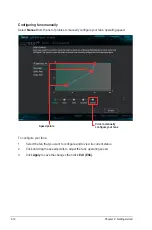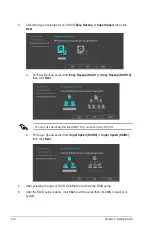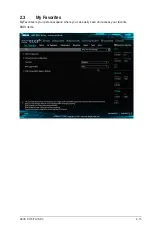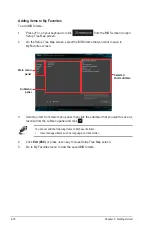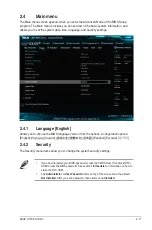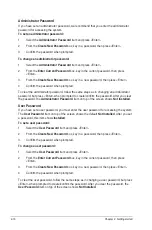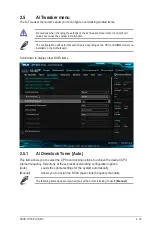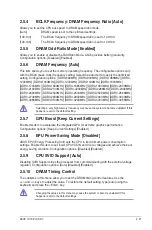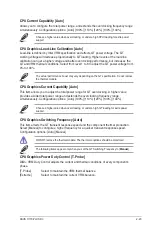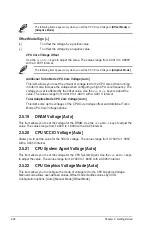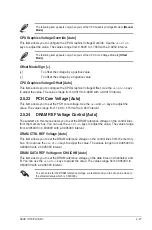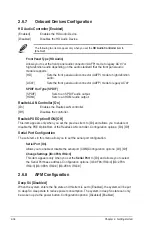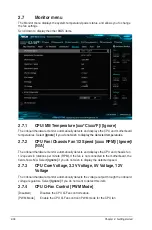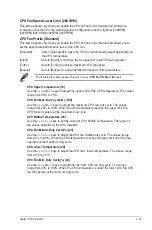
CPU Current Capability [Auto]
Allows you to configure the total power range, and extends the overclocking frequency range
simultaneously. Configuration options: [Auto] [100%] [110%] [120%] [130%] [140%]
Choose a higher value when overclocking, or under a high CPU loading for extra power
support.
CPU Graphics Load-Line Calibration [Auto]
Load-line is defined by Intel VRM specification and affects GT power voltage. The GT
working voltage will decrease proportionally to GT loading. Higher levels of the load-line
calibration can get a higher voltage and better overclocking performance, but increases the
GT and VRM thermal conditions. Select from level 1 to 8 to adjust the GT power voltage from
0% to 100%.
The actual performance boost may vary depending on the GT specification. Do not remove
the thermal module.
CPU Graphics Current Capability [Auto]
This item allows you to adjust the total power range for GT overclocking. A higher value
provides a wider total power range and extends the overclocking frequency range
simultaneously. Configuration options: [Auto] [100%] [110%] [120%] [130%] [140%]
Choose a higher value when overclocking, or under a high GT loading for extra power
support.
CPU Graphics Switching Frequency [Auto]
This item affects the GT transient response speed and the component thermal production.
Select [Manual] to configure a higher frequency for a quicker transient response speed.
Configuration options: [Auto] [Manual]
DO NOT remove the thermal module. The thermal conditions should be monitored.
The following items appear only when you set the GT Switching Frequency to [
Manual
].
CPU Graphics Power Duty Control [T.Probe]
DIGI+ VRM Duty Control adjusts the current and thermal conditions of every component’s
phase.
[T.Probe]
Select to maintain the VRM thermal balance.
[Extreme]
Select to maintain the current VRM balance.
ASUS H170-PLUS D3
2-23


